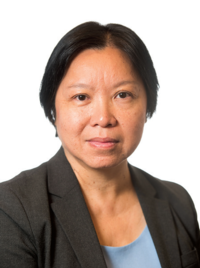L. Ruby Leung
The human population has been increasingly exposed to hazards associated with weather and climate due to changes in human settlement and evolving weather and climate patterns towards higher likelihoods of extremes. The weather and climate challenges that our society faces are expanding at a fast pace. To meet these challenges, we must build a stronger and deeper science foundation to transform our understanding and ability to predict weather and climate. The American Meteorological Society has the vision to “advance the atmospheric and related sciences, technologies, applications, and services for the benefit of society.” More than ever, we must reach out to other fields such as computational and mathematical sciences and other physical sciences and engineering fields to strengthen our foundation and develop new insights and capabilities. Working in a multidisciplinary national laboratory, I have witnessed cross-seeding of ideas from different fields that inspired new science questions and sparked new research directions. Through my experience working across multiple government agencies, I have also been inspired by achievements made possible when government, academic, and private sectors work together to put research into practical use. If I am elected a councilor of AMS, I would like to strengthen the focus of the Society in its role to encourage and provide opportunities for cross-disciplinary research and education. We need to train the next generation of researchers and educators with a strong disciplinary foundation as well as a broader appreciation of exciting new concepts and tools from other fields. The Society can also play key roles in promoting communications and collaborations among government, academic, and private sectors to bridge fundamental research and practical solutions to address the weather and climate challenges we face in the twenty-first century.
L. Ruby Leung
L. Ruby Leung is a Battelle Fellow at the Pacific Northwest National Laboratory and an affiliate scientist at the National Center for Atmospheric Research. Ruby’s research broadly cuts across multiple areas in modeling and analysis of the climate and water cycle, including orographic precipitation, monsoon climate, extreme events, land surface processes, land–atmosphere interactions, and aerosol–cloud interactions. Ruby is the chief scientist of the U.S. Department of Energy’s (DOE) Energy Exascale Earth System Model (E3SM), a major effort to develop state-of-the-art capabilities for modeling human–Earth system processes on DOE’s next-generation high-performance computers. She has organized several workshops sponsored by DOE, the National Science Foundation, the National Oceanic and Atmospheric Administration, and the National Aeronautics and Space Administration to define gaps and priorities for climate research. She serves as a member of the Board on Atmospheric Sciences and Climate of the National Academies of Sciences, Engineering, and Medicine, and is an editor of the Journal of Hydrometeorology and Journal of Geophysical Research-Atmospheres. Ruby is an elected member of the National Academy of Engineering and the Washington State Academy of Sciences. She is also a fellow of AMS, AGU, and American Association for the Advancement of Science. She received a B.S. in physics and statistics from Chinese University of Hong Kong and an M.S. and a Ph.D. in atmospheric sciences from Texas A&M University.
